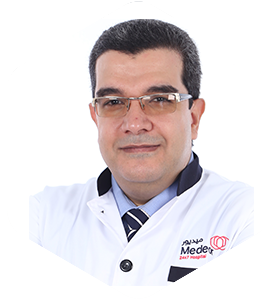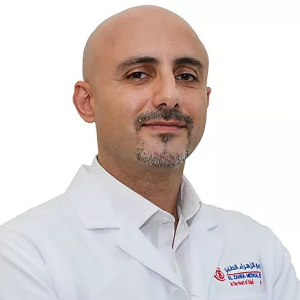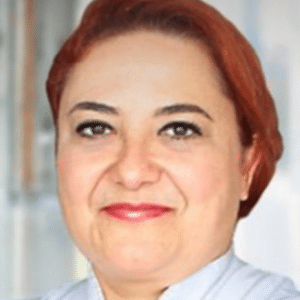Trigeminal Neuralgia Treatment
Trigeminal neuralgia which can also be referred to as tic douloureaux, is a condition that is marked by intense facial pain. This chronic pain condition affects the trigeminal nerve, which carries sensation from the face to the brain. The condition can disrupt the normal activities of an individual like smiling, talking, chewing, brushing or even… Read More
Top Doctors For Trigeminal Neuralgia Treatment Treatments
Top Hospitals For Trigeminal Neuralgia Treatment Treatments
Trigeminal Neuralgia Treatment
Trigeminal neuralgia which can also be referred to as tic douloureaux, is a condition that is marked by intense facial pain. This chronic pain condition affects the trigeminal nerve, which carries sensation from the face to the brain. The condition can disrupt the normal activities of an individual like smiling, talking, chewing, brushing or even shaving facial hairs. Any of these activities can trigger brief bouts of intense pain. These painful episodes, while brief, can return sporadically. The individual may also experience constant pain that is not as severe.
Furthermore, the condition can also progress to longer, more frequent bouts of intense pain. The condition is usually unilateral, but when it is bilateral, both sides are affected, but not at the same time. Bilateral trigeminal neuralgia is also quite rare. The right side of the face is usually more affected in this condition than the left, and women are more likely to be affected than men. The condition is also more likely to occur in individuals who are older than 50 years of age.

What are the types of trigeminal neuralgia?
There are two main forms of trigeminal neuralgia, they include;
- Type 1 or typical trigeminal neuralgia – The affected individual may experience painful episodes that are sharp intense, and sporadic. The individual may feel pain and a burning sensation in some cases. These sensations can last from a few seconds to minutes. Though there can also be pain-free breaks in between the episodes, they can continue for up to two hours.
- Type 2 or atypical trigeminal neuralgia – This is usually less painful and intense but has a wider spread. There is usually constant pain, which may be in the form of a stabbing or burning sensation and persistent aches and pains. There may be more difficulty in controlling the symptoms of this type of trigeminal neuralgia.
What is the cause of trigeminal neuralgia?
The function of the trigeminal nerve is disrupted in this condition. The cause is usually contact between the trigeminal nerve and a normal blood vessel, an artery or a vein. This contact puts pressure on the nerve and causes disruption or malfunction. While this is one of the most common causes, there are also other causes of the condition as well. Trigeminal neuralgia can be caused by a tumour compressing the trigeminal nerve, multiple sclerosis, or any similar condition that can cause damage to the myelin sheath. The condition may also be elicited by a brain lesion or several abnormalities. In other cases, surgical damage, trauma to the face or even stroke may be the cause of trigeminal neuralgia.
What are the symptoms seen in trigeminal neuralgia?
In trigeminal neuralgia, one or more of the following symptoms may be seen:
- Attacks of pain that may last from a few seconds to several minutes
- Spontaneous attacks of pain triggered by activities like speaking, chewing, and brushing the teeth
- Episodes of severe shooting or jabbing pain
- Pain that occurs with facial spasms
- Pain affecting one side of the face
- Pain focused on one spot or spread in a wider pattern
- Pain in the areas that are supplied by the trigeminal nerves like the jaw, teeth, gums, lips, eyes and the forehead though less often.
How is the condition diagnosed?
The doctor will enquire about the patient’s medical history and the symptoms that are being experienced, they will also perform a physical examination on the head and the neck area. The diagnosis would be based on the type of pain being felt, the actions that trigger it, and the exact spot or spots where the pain is being felt. A neurological examination is where the nerves in the brain and the motor system function are examined. The reflexes and the pain tolerance of the patient are also assessed. Other conditions that may cause facial pain will also have to be ruled out, conditions such as sinusitis, migraines or cluster headaches, TMJ disorders and post-herpetic neuralgia. Brain tumours would also have to be ruled out using MRI scans which show if there is a blood vessel pressing on the nerve.
How is the condition treated?

The symptoms seen in this condition can be treated with a combination of medication, surgery and other complementary therapies.
Medication
Some of the medications that are prescribed for the condition include:
- Anticonvulsant drugs – the first choice drug is carbamazepine, this helps in treating the pain due to trigeminal neuralgia. Some other medications are phenytoin, gabapentin, sodium valproate etc. The dose could be increased if the patient complains that they are not very effective.
- Tricyclic antidepressants – the most common are amitriptyline or nortriptyline and are usually used to handle type 2 trigeminal neuralgia symptoms.
- Muscle relaxants – baclofen can be administered together with phenytoin and carbamazepine
- Other medicines – Other medications like nerve blocks are sometimes used to provide temporary relief. To block sensory nerves, a botulinum toxin injection may be utilized.
Surgery
If a patient does not respond to medication and the condition worsens, they may be a candidate for surgical intervention. There are several surgical intervention options. The doctor will recommend one based on the features of the particular patient and their symptoms like their age, physical health, severity of pain experienced, previous surgeries done and the risks and benefits that will be achieved. Also, surgical intervention is more difficult in patients with type 2 trigeminal neuralgia. Some of the percutaneous interventions include:
- Balloon compression – The principle behind this technique is the compression of the nerve and the damaging of the pain-causing fibres using a small catheter with a small balloon. The procedure has been known to relieve the symptoms for one or two years, though it can cause numbness of the face.
- Glycerol injection rhizotomy – The surgeon injects the glycerol into the root of the trigeminal nerve, which causes selective nerve damage and inhibits the body’s ability to transmit pain signals to the brain. This procedure can suppress pain for two years though it can be performed multiple times. The procedure can also cause facial numbness and tingling.
- Radiofrequency thermal lesioning – The principle behind this is the destruction of some of the nerve fibres using heat. The procedure may cause facial numbness, and the symptoms may return after three or four years.
Microvascular decompression
This is a more invasive surgical procedure, but it is typically the most successful of all the surgical procedures. It can typically provide relief for up to 10 years. The procedure aims to provide long-lasting solutions where the trigeminal nerve can recover and return to a more normal and pain-free state. The procedure is more invasive and is only recommended for younger patients who are also in good health condition.
Stereotactic radiosurgery
This procedure uses various techniques to deliver a highly concentrated amount of radiation to the trigeminal nerve root where it meets the brain stem. A lesion usually forms which then prevents the transmission of pain signals to the brain. However, the patient may feel numbness in their face due to the procedure. The symptoms are usually eliminated for about three years, but the results may take some weeks to become active.
Other complementary therapies
Other approaches that may be tried along with drug therapy include:
- Yoga
- Meditation
- Aromatherapy
- Meditation
- Acupuncture
- Chiropractic
- Exercise
- Vitamin therapy
- Nutritional therapy
In some cases, it may be necessary to seek overseas medical treatment. This is because some of these therapies are not available locally. The option is usually offered by medical tourism agencies or meditour agencies. This can also count as health tourism or medical tourism due to the type of packages offered.















































































